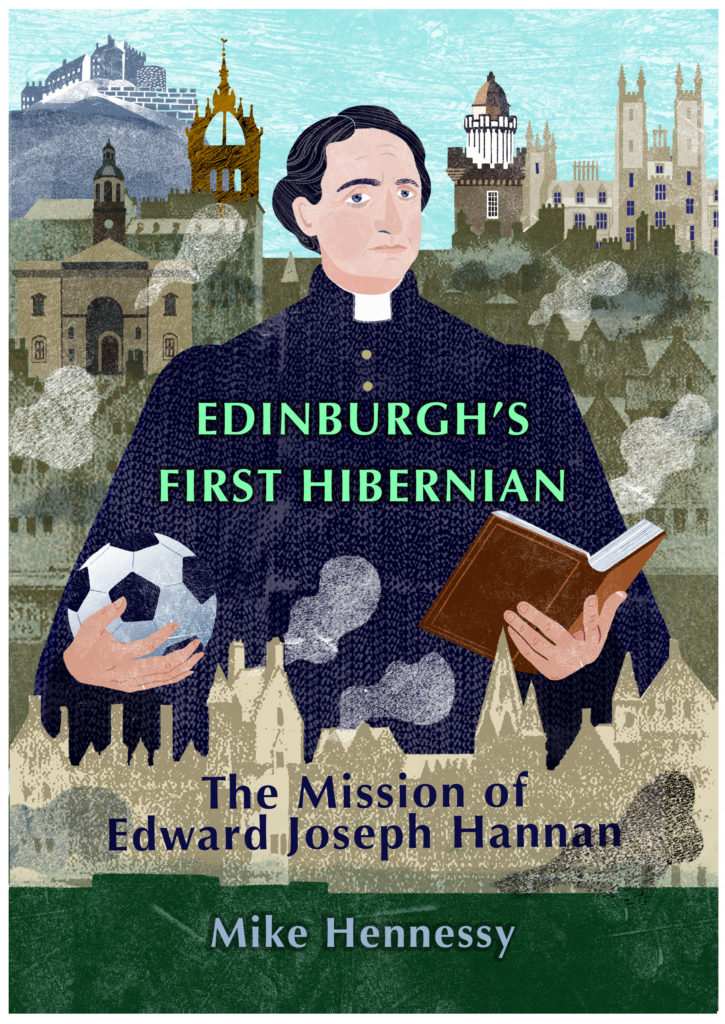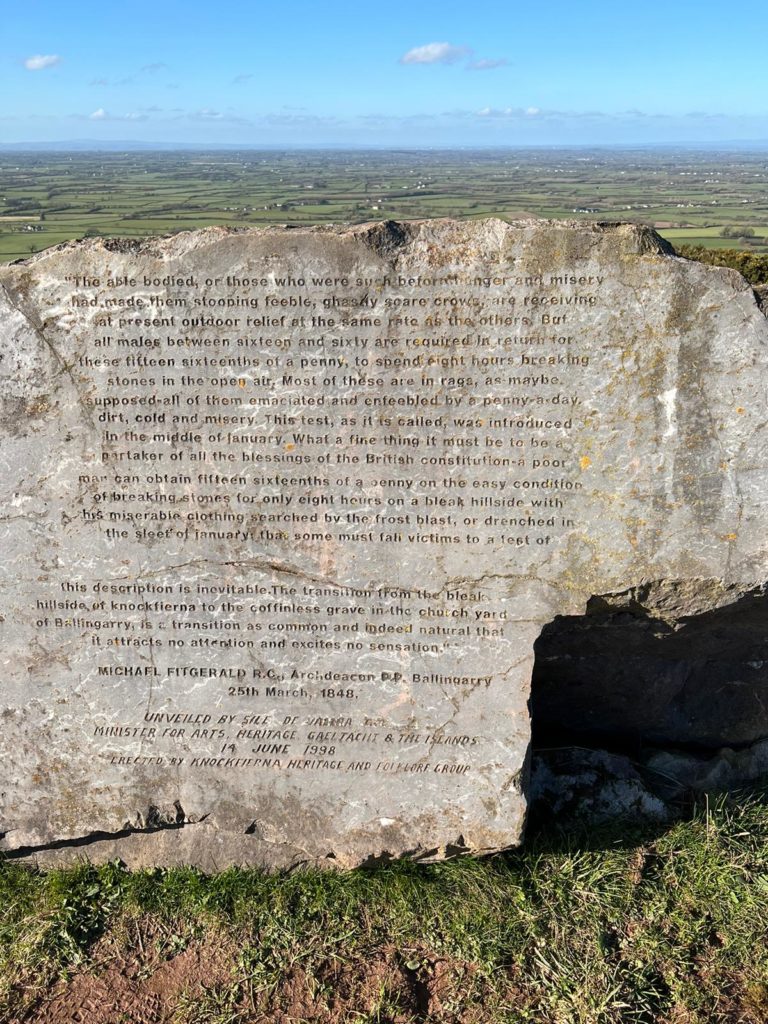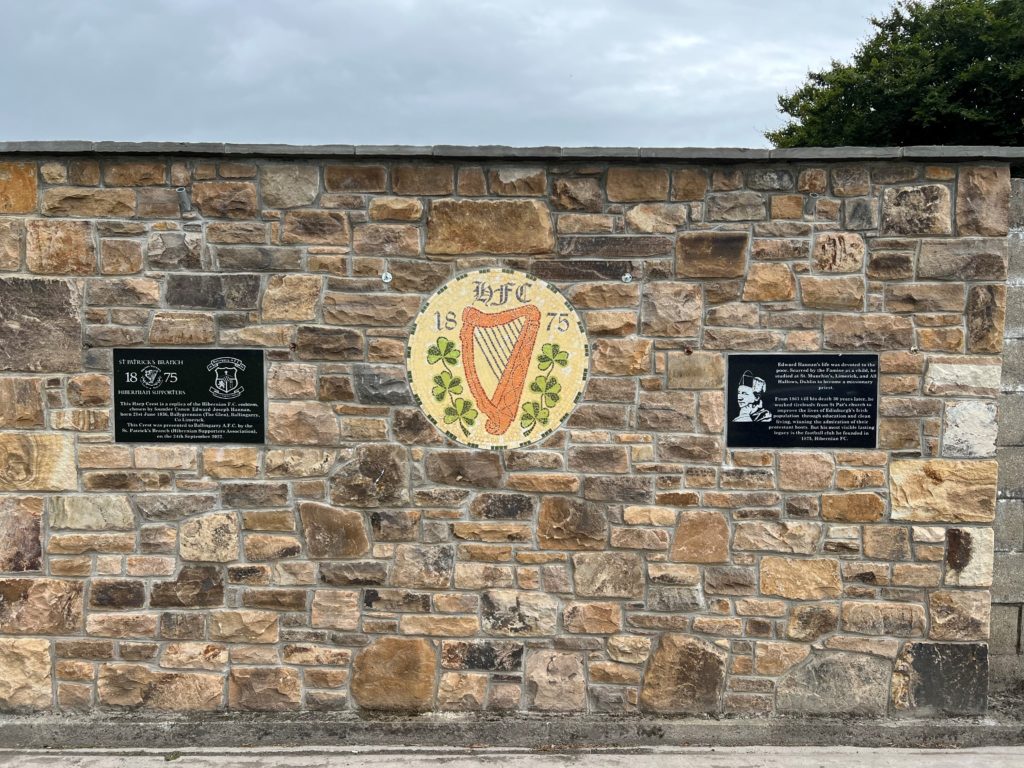THE problem with a name like Ballingarry is that there are several of them in Ireland, four of which lie in adjacent counties. One of them, in Co. Tipperary, was the site of the 1848 Young Ireland rebellion.
Two others, in Tipperary and Limerick, have no claim to fame that I know of. However, a second Ballingarry in Co. Limerick, to the south of Rathkeale and on the road to Charleville, is home to the birthplace of a man who would accomplish great deeds in Scotland rather than in Ireland in the second half of the 19th century. 
Edward Joseph Hannan was born in 1836 at a farm in the Glen, Ballygrennan townland, to the south of the Famine memorial on the hill of Knockfeirna. It is hoped that later this year, a plaque will be unveiled on the gatepost of the farm, signposting his birthplace. A memorial to him can already be found at the premises of local soccer team Ballingarry AFC. The second son of 11 children born to parents John and Johanna, as an adolescent he would have witnessed the worst excesses of the Great Famine; an experience which may well have convinced him to dedicate his life to the championing of the poor.
The parish priest in Ballingarry at the time, Archdeacon Michael Fitzgerald, a disciple of Daniel O'Connell and subsequently agitator for poor relief and land reform, was the main spiritual influence in young Hannan’s life. After a basic primary school education close to Ballingarry town, there followed two years at St Munchin's junior seminary in Limerick; and then six years of study at All Hallows College, Drumcondra, Dublin. Bishop Gillis of the Eastern District of Scotland, desperate for priests to administer to the huge Irish influx following the Famine, paid for his education there. Edward Hannan was ordained in 1860 and the following year moved to Edinburgh, where he was to stay till his death 30 years later.
 The Knockfeirna Famine memorial near Ballingarry quoting local parish priest Archdeacon Michael Fitzgerald (picture Mike Hennessy)
The Knockfeirna Famine memorial near Ballingarry quoting local parish priest Archdeacon Michael Fitzgerald (picture Mike Hennessy)He became a curate at St Pat's Church in the Cowgate, nicknamed ‘Little Ireland’ for good reason. A once thriving and prosperous area of the city, it had been allowed to degenerate as the nobility and gentry who had lived there moved north to more attractive lodgings in the New Town.
The empty houses were filled initially by displaced Scottish Highlanders, victims of the Clearances, and then by the waves of Irish immigrants fleeing poverty and starvation at home.
Unscrupulous landlords filled the tenements with as many families as possible, with scant regard for human decency, access to light or basic sanitation. Disease was everywhere, and Hannan himself caught typhoid in his first few years after visiting his sick parishioners. Many of his flock had had no education and could scarcely speak English, making them unemployable. And they also faced religious prejudice, given that they were entering the home city of John Knox, the father of the Reformation in Scotland.
 Ballingarry AFC Memorial
Ballingarry AFC MemorialHannan embarked upon a mission to educate the poor and to encourage temperance, clean living and the adoption of family values. One vehicle was the Catholic Young Men's Society (CYMS), a branch of which he opened in 1865. It became the most successful in Scotland within a decade, providing a savings bank, funeral and benefits society, a library, reading rooms, a drama society, a ball court and a large hall for major events such as concerts and, later, political meetings.
The more enlightened members of the Protestant establishment were supportive, and Lord Provost William Chambers laid the foundation stone for the new home for the CYMS in St Mary's Street in 1869. The building, known as the Catholic Institute, still stands today. The great hall on the first floor became known as St Mary's Street Hall.
And it was there that Father Hannan announced, on 6th August 1875, the launch of a football (soccer) club by some young members of the Society, who had been excluded from playing for other local clubs on the basis of their nationality and their religion. That club was named Hibernian Football Club, its badge the harp and its motto Erin go Bragh (Ireland Forever). Hibernian FC celebrates 150 years since its birth this year.
Canon Hannan is remembered each year with a commemorative Mass at St Pat’s and a service at the Grange cemetery on or around his birthday (21st June) or his passing (24th June). He is also remembered in his only biography, Edinburgh's First Hibernian, published by Thirsty Books and due for release on 6th August.
Despite some early resistance from the Scottish and Edinburgh football authorities, Hibs, as they became known, very quickly became the dominant club in the East of Scotland, and in 1887, the first club from there to win the Scottish Cup. Proceeds from matches were donated to charities of all religions. But storm clouds were gathering, and a combination of losing half their team to the newly formed Glasgow Celtic in 1888, and the loss of their ground when it became more valuable to developers than it was as a football ground, resulted in the club stopping playing for nearly 18 months just before Hannan's death in 1891.
Hibs’ temporary hibernation may also have resulted from its committee men, including to some extent Hannan himself, taking their eye off the ball and becoming more interested in supporting Charles Stuart Parnell's Home Rule movement than the fortunes of their football club. Many of these men were active members of the Irish National League until it split following the public outrage at Parnell's relationship with Kitty O'Shea.
The club returned to its competitive best in the following decade and once again won the Scottish Cup in 1902 and the Scottish League for the first time in season 1902–03. By this time, it had secured a new ground some 200 yards further along Albion Road from the previous one, and that remains the home of the club to this day. There have, of course, been many improvements and redevelopments over the years, including the building of modern stands and the levelling of the pitch, which was once notorious for its slope.
On the pitch, the club had a couple of purple patches. Between 1948 and 1952 they won the Scottish League three times with a forward line which can claim to be Scotland's best ever, the Famous Five. And in the late 1960s and early 1970s, a team which became known as Turnbull's Tornadoes after their manager Eddie Turnbull, was denied major honours only because it coincided with the emergence of Jock Stein's Celtic, at one point the best in Europe if not the world. It was during this period, on New Year's Day 1973, that Hibs won the derby match away to Edinburgh rivals Hearts, by 0–7. The Scottish Cup eluded them for more than a century; a ‘curse’ having been placed on the club when a harp was removed from the stands. It was replaced in 2016, and within months, Hibs had beaten Rangers 3–2 to bring the cup back to their home grounds at Easter Road.
Hibs will celebrate these events and many more from its 150 years in the next 12 months. The programme will start with an exhibition for fans in St Mary's Street Hall on August 6th, showcasing the club's history with memorabilia and artefacts. There will be further exhibitions, celebratory dinners, presentations and dedications throughout the year. All of which you can keep up to date with via
Despite the club’s name (Latin for Ireland), Hibs' Irish credentials have sometimes been questioned. There have been periods when the club has sought to distance itself from its roots, but the club's badge—with its green and white colours, the harp beside Edinburgh Castle and emblem of the port of Leith—pays tribute to the blending of the best of Ireland and Scotland, as Canon Hannan would have wished all those years ago.
Edinburgh’s First Hibernian is available from August 6 from:
https://www.thirstybooks.com/bookshop/edinburghs-first-hibernian
The book is illustrated and contains over 500 of them footnotes, referencing to an extensive range of sources. It debunks a number of myths about the founding of the club, with supporting evidence.
For more information on Hibs fixtures

